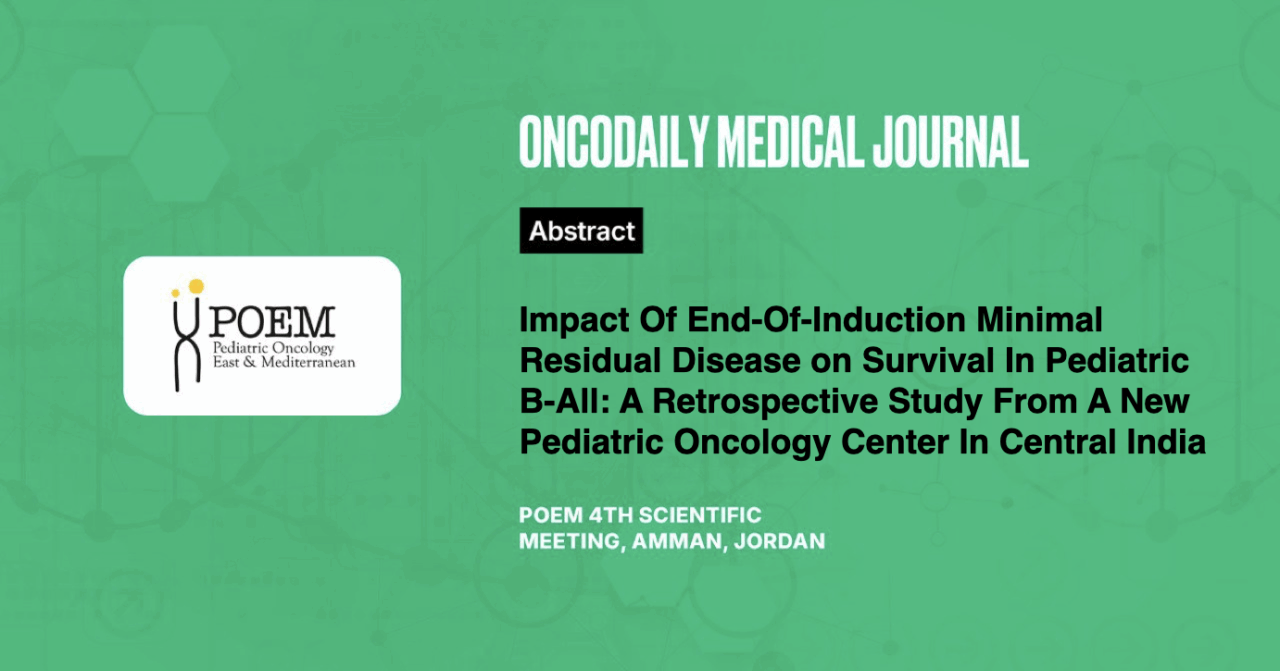Impact Of End-Of-Induction Minimal Residual Disease on Survival In Pediatric B-All: A Retrospective Study From A New Pediatric Oncology Center In Central India
Abstract
Introduction: Minimal residual disease (MRD) is a strong prognostic indicator in pediatric B-precursor acute lymphoblastic leukemia (B-ALL). This study examines the relationship between end-of-induction MRD and various factors, including overall survival at a tertiary care center in central India.
Methodology: We retrospectively analyzed 65 patients with Acute lymphoblastic leukemia (ALL) who received induction therapy according to the ICICLE 2014 protocol between 2018 and 2023, followed up till July 2024. MRD status was assessed at the end of induction therapy, with a cutoff level of <0.01% considered MRD-negative. Factors, including age, total leukocyte count (TLC), response to prednisolone, and cytogenetics, were analyzed. We used Kaplan-Meier survival analysis to evaluate the impact of MRD status on overall survival.
Results: The sixty-five patients included 41 who were MRD-negative and 24 who were MRD-positive after induction therapy. Patients with MRD-positive status had significantly poorer overall survival. Positive MRD was noted in relapsed patients; 66.67% of patients who relapsed and died had positive MRD. MRD-positive patients tended to be older, have a less favorable response to prednisolone, and present with higher initial TLC, though these trends were not statistically significant. The 2-year overall survival rate was 80.5% for MRD-negative patients, compared to 62.5% for MRD-positive patients.
Conclusion: These findings demonstrate the importance of achieving MRD-negative status and support using MRD assessment for risk stratification in ALL treatment.





